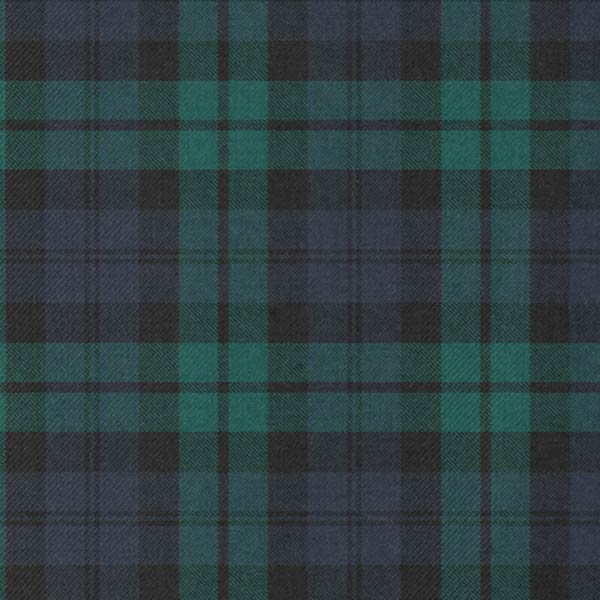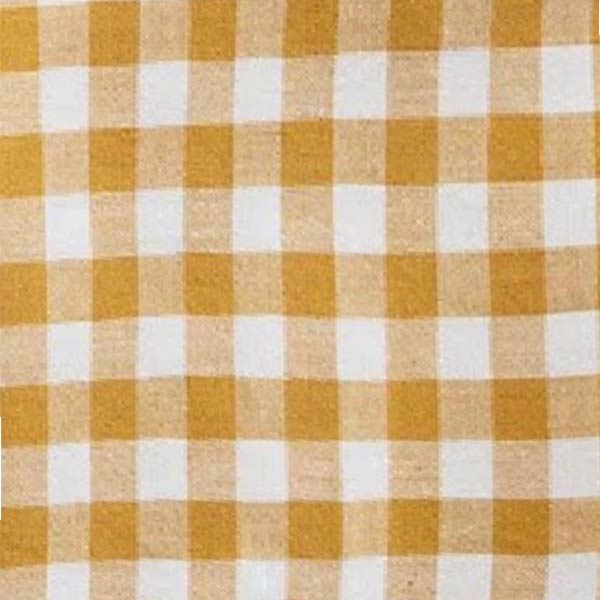Different Types of Plaid: A Guide to Plaid Pattern Names
Plaid is a versatile and timeless pattern that has been around for centuries. It is a pattern that consists of horizontal and vertical stripes of different colors and sizes that intersect to form a checkered pattern. Plaid is commonly associated with Scottish culture and is often referred to as tartan. However, plaid has evolved over time and has become a popular pattern in fashion and home decor.
There are several types of plaid patterns, each with a unique name and history. Gingham is a type of plaid that is characterized by small, even checks in two colors. It is often made from cotton and is commonly used for tablecloths, napkins, and clothing. Madras is another type of plaid that originated in India and is known for its bright, bold colors. It is often made from lightweight cotton and is commonly used for summer clothing. Houndstooth is a type of plaid that features a broken check pattern that resembles the teeth of a hound. It is often made from wool and is commonly used for jackets and skirts.
Table of Contents
What is plaid – Definition of Plaid
Plaid fabric is a type of textile that is characterized by its distinctive pattern of intersecting horizontal and vertical stripes of varying widths and colors. The pattern is created by weaving together different colored threads in a specific pattern. Plaid fabric is often associated with Scottish tartans, but it can also be found in a variety of other styles and colors. It is commonly used in clothing, such as flannel shirts and kilts, as well as in home decor items like blankets and curtains. Plaid fabric is known for its durability and warmth, making it a popular choice for cold weather clothing and accessories. Or that’s the TL;DR (too long; didn’t read) version of it. Here are a bit more about the plaid fabric:
Plaid is a pattern consisting of vertical and horizontal stripes that intersect to form a checkered or square pattern. It is a popular pattern used in clothing, accessories, and home decor. Plaid patterns can be made from a variety of materials, including wool, cotton, and synthetic fabrics.
History of Plaids
Plaid patterns have a rich history dating back to the 16th century in Scotland. Originally, plaid referred to the woolen fabric that was used to make kilts, but over time, the term came to describe the distinctive pattern of intersecting lines and blocks of color that we now associate with the word.
Traditional Plaids
Traditional plaids were made using a twill weave, which created a diagonal pattern in the fabric. The most common colors used in traditional plaids were green, blue, and red, which were derived from natural dyes. These plaids were often associated with specific regions of Scotland and were used to identify members of different clans.
Buffalo Check/Plaid
Buffalo check/plaid is a larger scale plaid pattern that originated in North America. It is characterized by its bold, symmetrical pattern of two colors, usually red and black. Buffalo check/plaid was originally used for blankets and jackets worn by lumberjacks and hunters.
Royal Stewart Tartan
The Royal Stewart tartan is one of the most recognizable tartan patterns in the world. It features a bold red and green plaid pattern with white and black accents. The pattern is associated with the Royal House of Stewart and is often used for formal occasions.
Scottish Clans and Tartan Patterns

Many tartan patterns are associated with specific Scottish clans, and each pattern has its own unique history and meaning. For example, the Black Watch tartan is associated with the Black Watch regiment of the British Army, while the Clan Wallace tartan is associated with the Wallace clan.
Graph Checks
Graph checks are a type of plaid pattern that features a symmetrical pattern of rectangles in two colors. This pattern is often used for jackets, coats, and accessories.
Glen Plaids
Glen plaids are a type of plaid pattern that features a subtle, irregular pattern of intersecting lines. This pattern is often used for suits and pants.
Houndstooth
Houndstooth is a more complex pattern that features a series of jagged lines that create a distinctive, geometric design. The pattern is usually in black and white, but it can also be found in other colors. Houndstooth is often used in men’s suits and jackets, but it can also be found in women’s clothing items like skirts and blouses. This pattern is perfect for those who want to make a bold statement with their fashion choices.
Tattersall
Tattersall is a classic pattern that features thin, evenly spaced stripes that cross each other at right angles to form a checkered pattern. The stripes can be any color, but they are usually in muted tones like beige, gray, or blue. Tattersall is often used in men’s dress shirts, but it can also be found in other clothing items like jackets, ties, and even socks. This pattern is perfect for those who prefer a more understated look.
Gingham
Gingham is another classic pattern that features a checkered design, but the stripes in gingham are all the same width and are usually in bright, bold colors like red, blue, or green. Gingham is often associated with summer and is used in clothing items like dresses, shirts, and shorts, as well as in home decor items like tablecloths and curtains. This pattern is perfect for those who want to add a pop of color to their wardrobe or home decor.
Plaid patterns continue to be popular today, and they can be found on a wide range of clothing and accessories, from jackets and coats to shoes and hats. Whether you prefer traditional Scottish tartans or bold buffalo check patterns, there is a plaid pattern out there for everyone.
Modern-Day Plaids
Plaid patterns have come a long way since their origins in Scotland in the 16th century. Today, modern-day plaids can be seen in a variety of clothing and home decor items. From sweaters to bedding to upholstery, plaids have become a staple in the fashion and design world.
Windowpane Plaids
Windowpane plaids are a popular modern-day plaid pattern that features a large grid-like design. This pattern is often used in tailored clothing like suits, blazers, and dress pants. The pattern gets its name from the resemblance to a windowpane.
Windowpane plaids can also be found in sweaters and sweater vests. These items are often made from wool or cotton and are perfect for layering during the colder months.
Madras Plaids
Madras plaids are a colorful and bright plaid pattern that originated in India. This pattern is often associated with summer clothing and is commonly found in lightweight cotton fabrics. Madras plaids feature a mix of bright colors and bold patterns that make them perfect for beachwear and casual summer dresses.
Madras plaids can also be found in bedding and furniture. These items often feature a mix of different patterns and colors that give off a fun and playful vibe.
In conclusion, modern-day plaids can be found in a variety of clothing and home decor items. From windowpane plaids in tailored clothing to colorful madras plaids in summer dresses and bedding, there is a plaid pattern for every occasion.
WHAT IS PLAID VS. CHECK VS. TARTAN
Plaid, check, and tartan are all patterns commonly found in clothing and textiles, especially in the context of traditional Scottish dress.
- Plaid is a pattern that consists of vertical and horizontal stripes of varying widths and colors that intersect to form a grid-like pattern. It can be made up of two or more colors and is often associated with flannel shirts.
- Check is a pattern that consists of small, evenly spaced squares of two alternating colors. It is often associated with gingham or tablecloths.
- Tartan is a pattern that consists of multiple horizontal and vertical stripes of different colors that intersect to form a repeating pattern. It is often associated with Scottish kilts and is used to identify different clans or families. Each tartan has its own unique set of colors and stripe widths.
While plaid and check patterns are more commonly used in modern fashion, tartan is still widely used in traditional Scottish dress and is often associated with Scottish heritage and culture.
Conclusion
In conclusion, plaid patterns have been around for centuries and continue to be popular in fashion and home decor. There are many different types of plaid, each with its own unique pattern and history.
From the classic tartan plaid of Scotland to the buffalo check of the American West, plaid patterns have evolved over time and have become a staple in many different cultures. Whether you prefer a bold, bright plaid or a more subtle, muted pattern, there is a plaid out there for everyone.
When it comes to plaid pattern names, there are countless variations and combinations of colors and lines. Some of the most popular plaid patterns include the Black Watch, Royal Stewart, and Dress Stewart, all of which have a rich history and are still widely used today.
Overall, plaid is a versatile and timeless pattern that can be used in a variety of ways. Whether you’re looking to add a pop of color to your wardrobe or create a cozy atmosphere in your home, plaid is a great choice. So next time you’re shopping for clothing or home decor, consider adding a plaid pattern to your collection.







